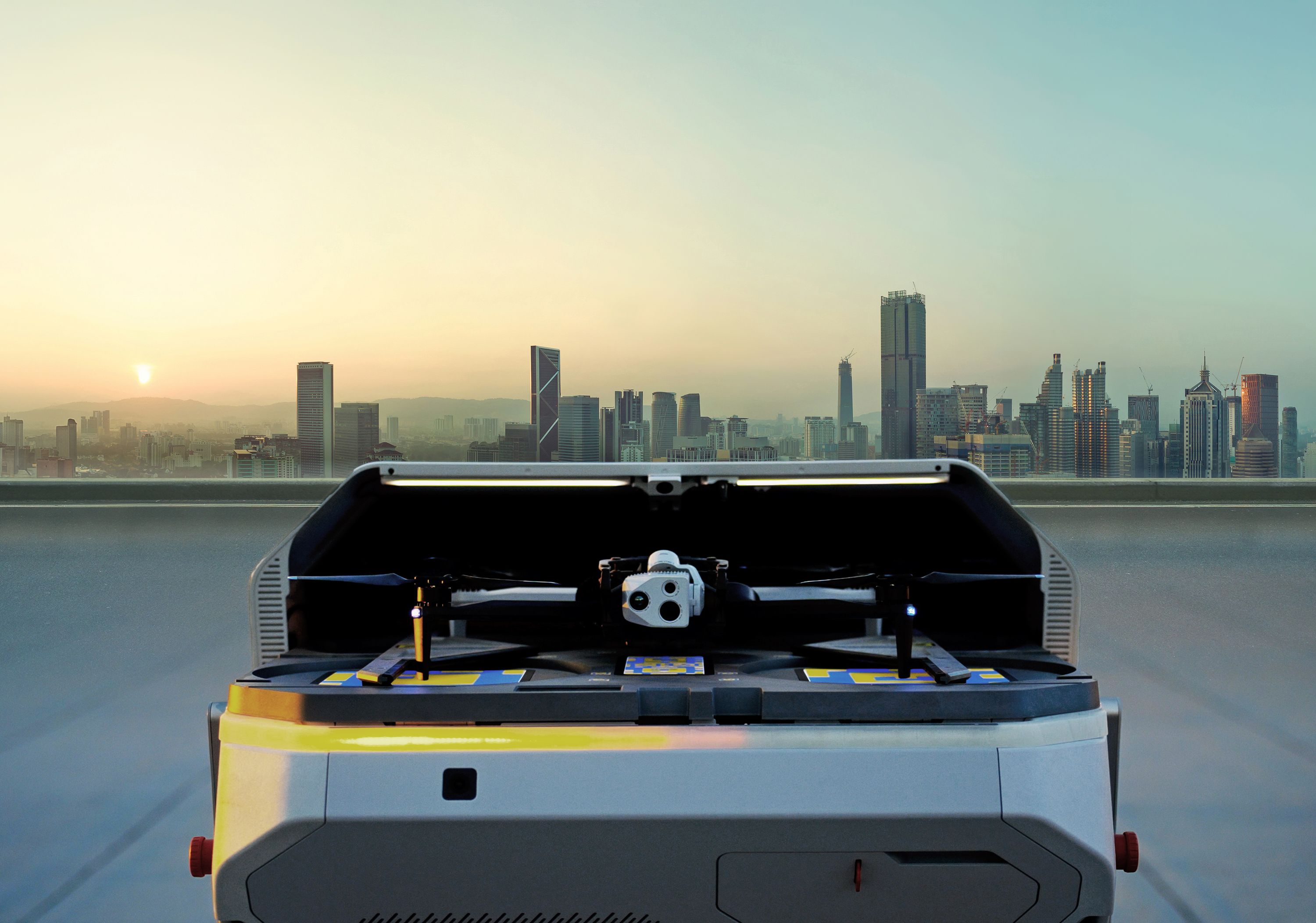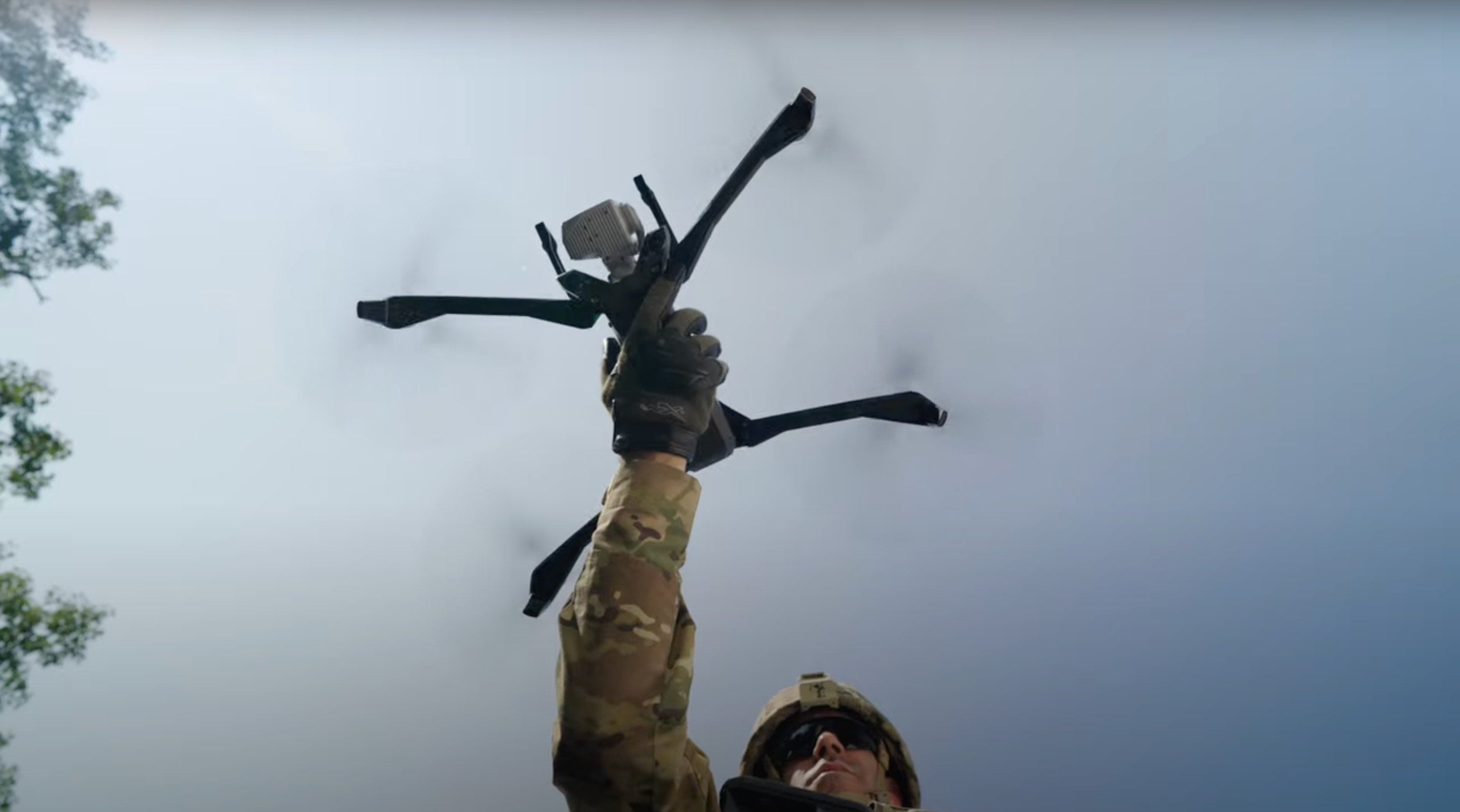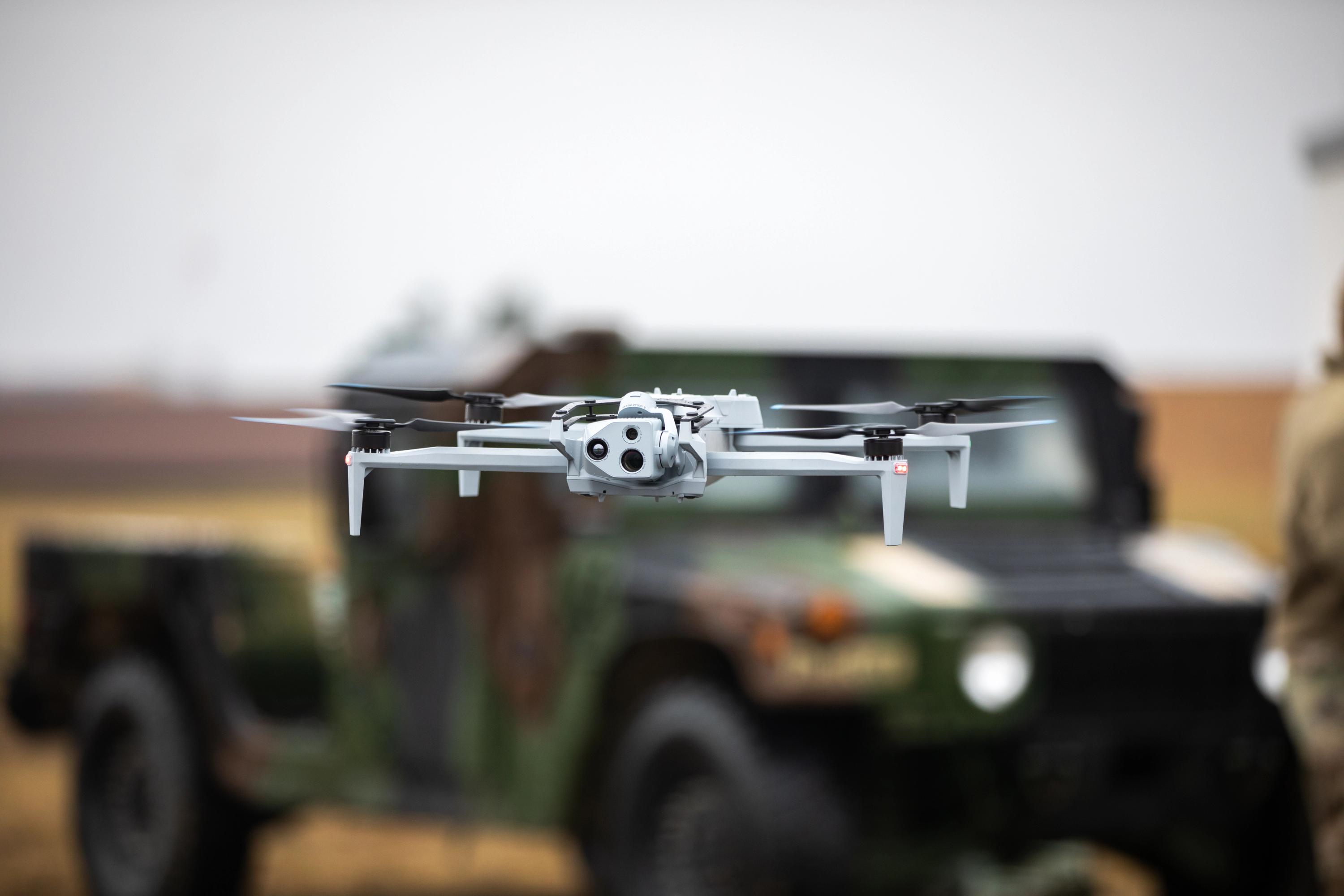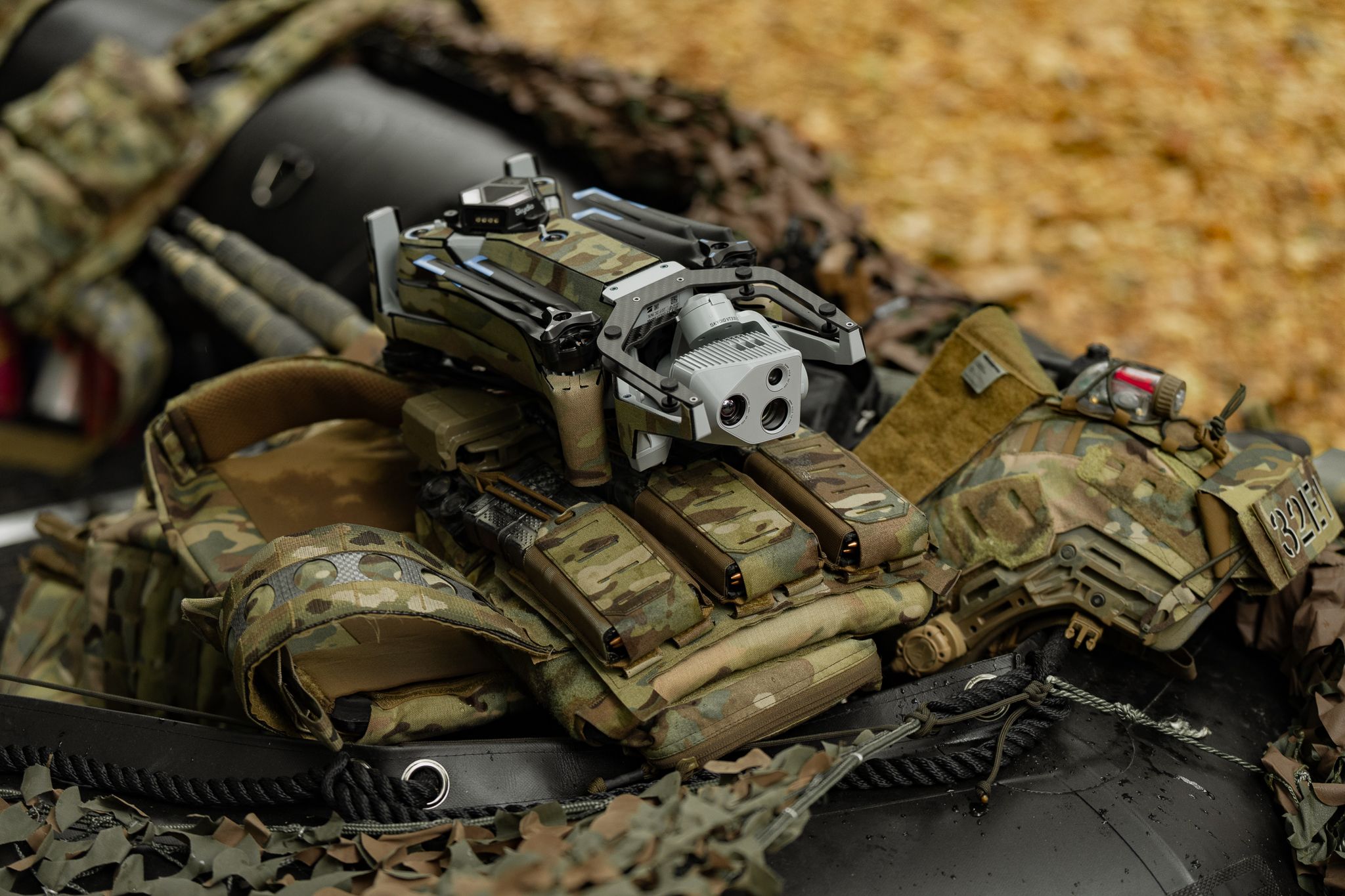Asymmetric Advantages for the Free World: Skydio X10D and the Next Evolution of Human-Machine Teaming
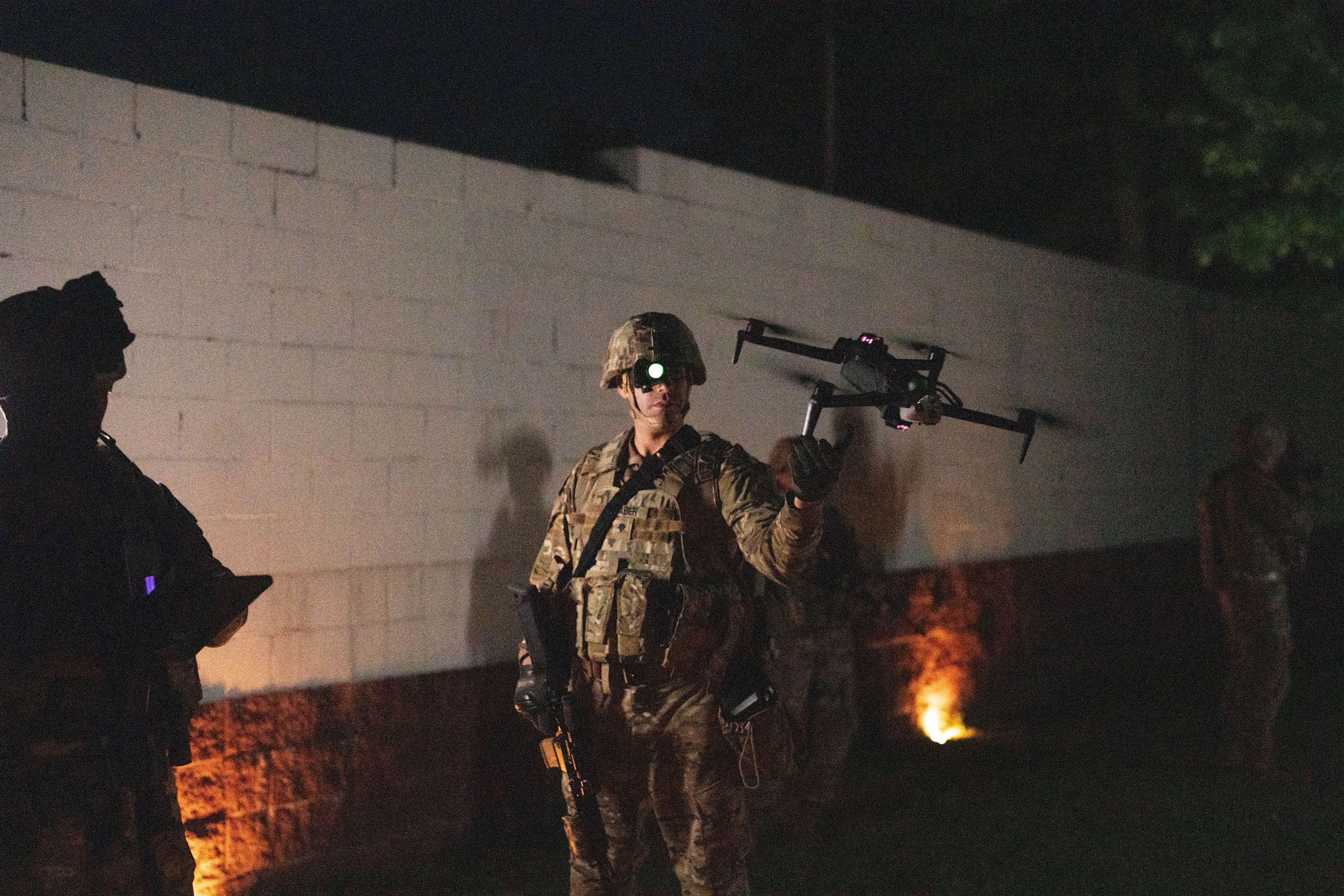
Human-machine teaming is changing how military forces take on challenges around the globe. For the world’s free and independent nations, small, survivable drones for defense, if used well, can create human-machine teams that help operators observe, learn, decide, and adapt better than their adversaries.
Defense forces of democratic nations need asymmetric advantages in every part of the competitive spectrum - from front-line combat to daily activities that support whole-of-government efforts to maintain readiness and deter aggression. A new generation of sUAS can serve as intelligent teammates that unlock the tactical and operational innovation of servicemembers, helping them create asymmetric advantages at each point of engagement.
Enter the X10D.
Skydio has released a new drone — the X10D — that answers the needs of defense forces. X10D is small, rucksack-portable, and easy to use, with the most powerful sensors of any drone in its class. It provides industry-leading onboard computing for front-edge processing of mission tasks, with an open, modular architecture to integrate with evolving battlefield technology at the network's edge.
X10D is optimized for defense, and carefully engineered to increase combat effectiveness. It can carry out missions day or night, even in dirty, low-light, contested, or GPS-denied environments. It is designed to enable better tactics and help speed the tempo of battlefield tasks, thus delivering a leap forward in the operational value of sUAS for defense forces.
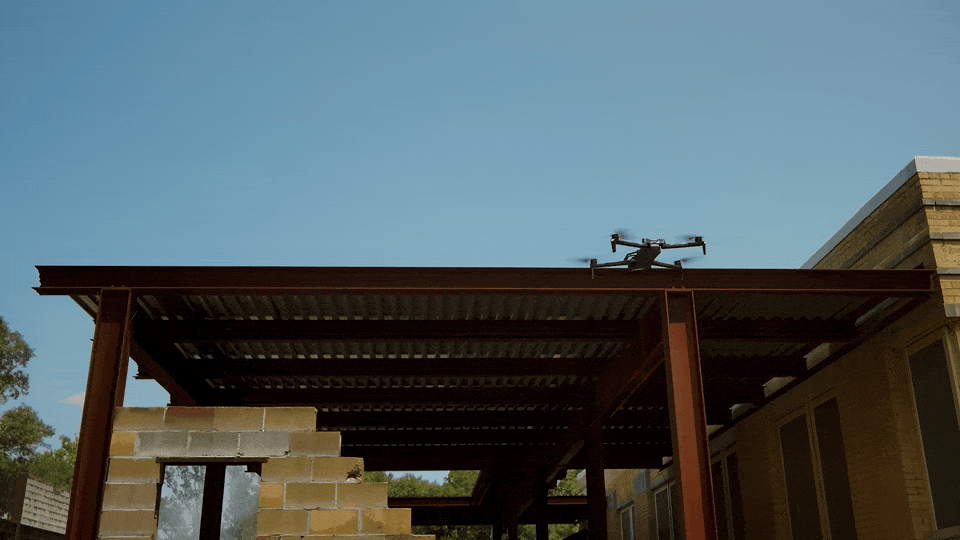
Onboard AI and autonomous navigation make X10D easy to fly. While less intelligent sUAS platforms require weeks of training for operators to become competent, new operators can master the basics of X10D in a few hours, with a far lower risk of crashing.
Opening up a new generation of tactics
New tactics become possible through X10D’s ability to create better battlefield geometries, provide more precise information for decision-making advantage, and support more varied effects chains through seamless technology integrations.
X10D has the right sensors to capture the level of detail needed by defense users, and the AI-powered autonomy to put those sensors wherever they are needed. Autonomous flight may sound like an abstract requirement until you think about the need to launch an sUAS from a covered or concealed location, navigate through congested terrain, maneuver in and out of built-up areas, position the gimbal for camera angles that account for an adversary’s ability to see, hear, sense, or interdict the drone — all without crashing.
X10D’s integration of day and night autonomy and powerful day and night sensors thus create a pivotal opportunity for improved human-machine teaming tactics. The combination of sensors and maneuverability, far exceeding the capabilities of previous generations of sUAS, makes X10D an ideal tool to unleash the creative innovation of defense forces.
“One advantage that they can never blunt, steal, or copy — because it's embedded in our people — is ingenuity: our ability to innovate, change the game and, in the military sphere, to imagine, create and master the future character of warfare." - U.S. Deputy Secretary of Defense Kathleen Hicks
Supporting networked, collaborative operations
Moreover, X10D is designed with ample computing power and open, modular architecture to support battlefield integrations. Skydio is proactively partnering with the government to expand drone applications and integration solutions. X10D complies with the Robotics and Autonomous Systems – Air (RAS-A) Interoperability Profile federal standard and provides enhanced MAVLink protocol support through ongoing adoption of the evolving RAS-A MAVLink dialect. At release, X10D supports the soldier robotic controller (SRoC) family of controllers and enables common situational awareness through integration with the Android Tactical Assault Kit (ATAK). But this is just the beginning. Skydio will continue to enable X10D’s autonomous capabilities to support a broad ecosystem of defense integrations and simplify the adoption of Skydio vehicles and their associated data products into third-party systems. X10D thus provides a baseline drone architecture that supports operational concepts built around small human-machine teams that interact with other military systems and equipment, creating resilient “teams of teams” for modern defense forces.
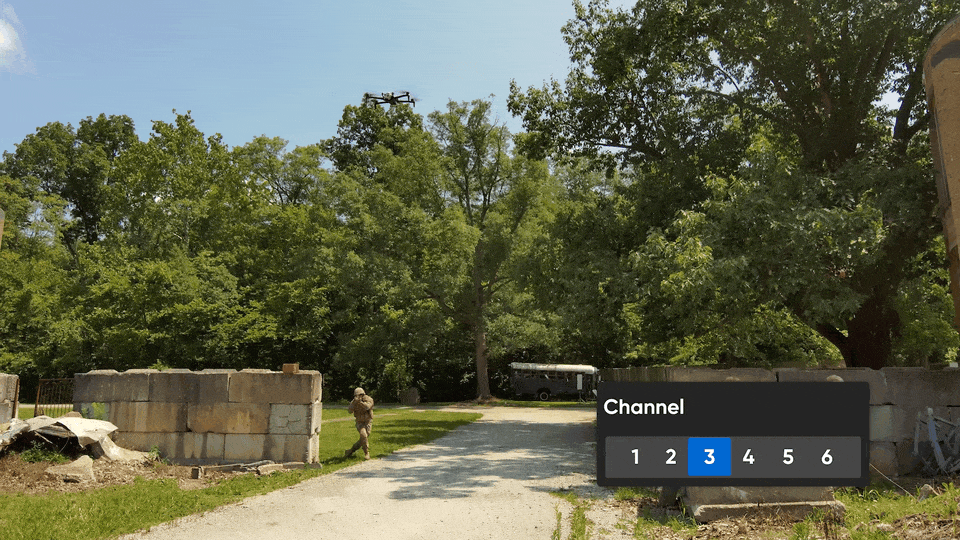
Simplifying battlefield tasks
X10D’s onboard processing power increases the automation of basic military tasks right on the drone, with no additional hardware or software requirements. Here are some examples of how the X10D amplifies combat effectiveness through task-orientated autonomy to help give warfighters a winning advantage.
- Autonomous night navigation. Equipped with a first-of-its-kind infrared navigation system and advanced algorithms, X10D is the only drone capable of autonomous night navigation and reliable obstacle avoidance. It can conduct more complex nighttime missions than any other drone.
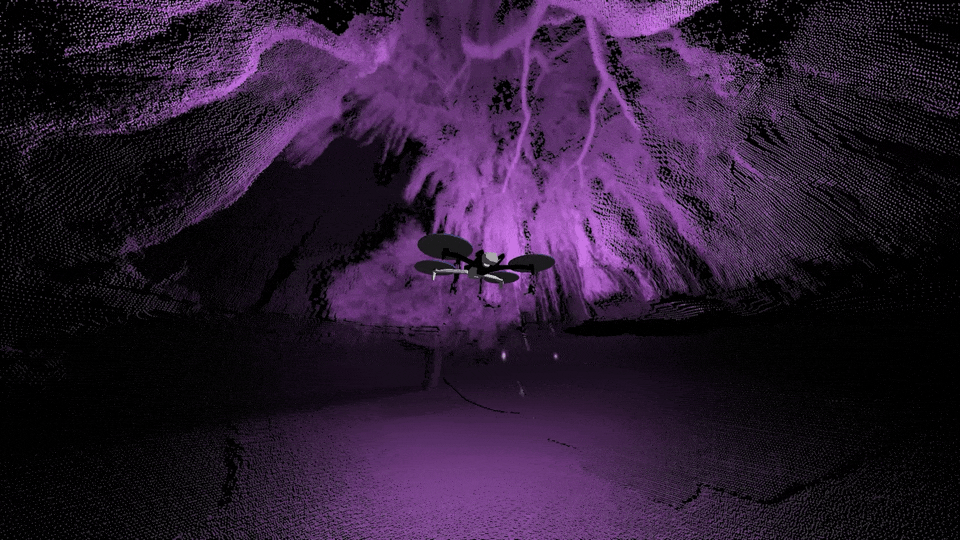
- Subject tracking. With its powerful AI, X10D can identify and track a subject day or night. Operators can choose to observe from a specific angle such as always from the front, or rotate around the selected subject. All of this happens automatically, with operator intervention allowed but not required.
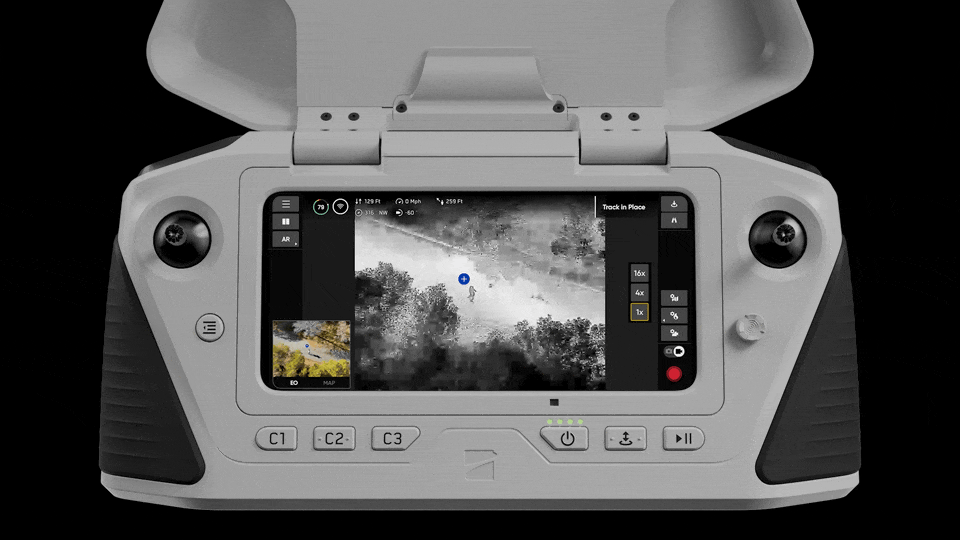
- Scout. The Scout features functions as a digital tether, allowing the drone to automatically track the position of a convoy or moving formation. With the Scout feature, operators can position the Skydio X10D at a desired overwatch position for a moving formation and aim the camera to focus forward, backward, or in any other desired direction, all the while following the formation’s tracked position.
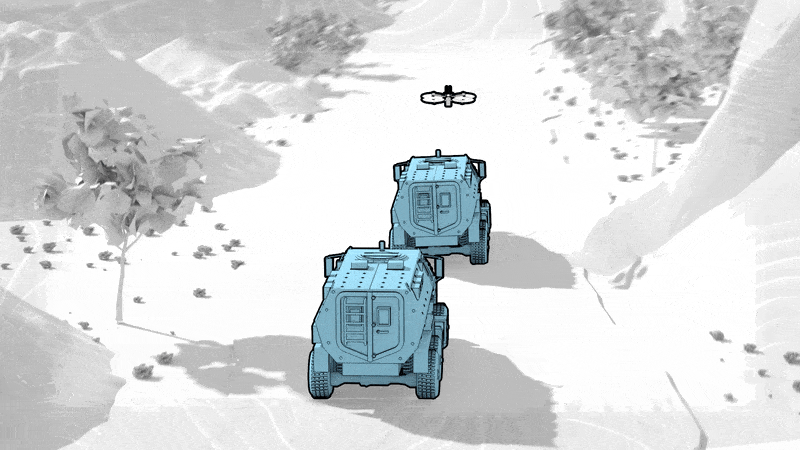
- Crosshair coordinates. The crosshair coordinates feature allows operators to upload digital terrain elevation data (DTED) to the drone and use it as a reference to display real-time coordinates of ground-level positions at the center of the drone’s crosshairs.
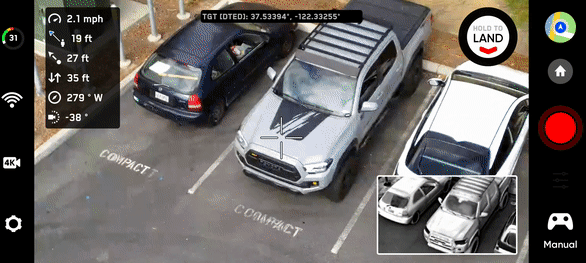
- Map capture. Map capture allows for automated 2D scanning flight profiles which can be used to generate 2D ortho mosaics, digital elevation models (DEMs), and digital terrain models (DTMs). It can also be used to create 3D models via 3rd party photogrammetry.
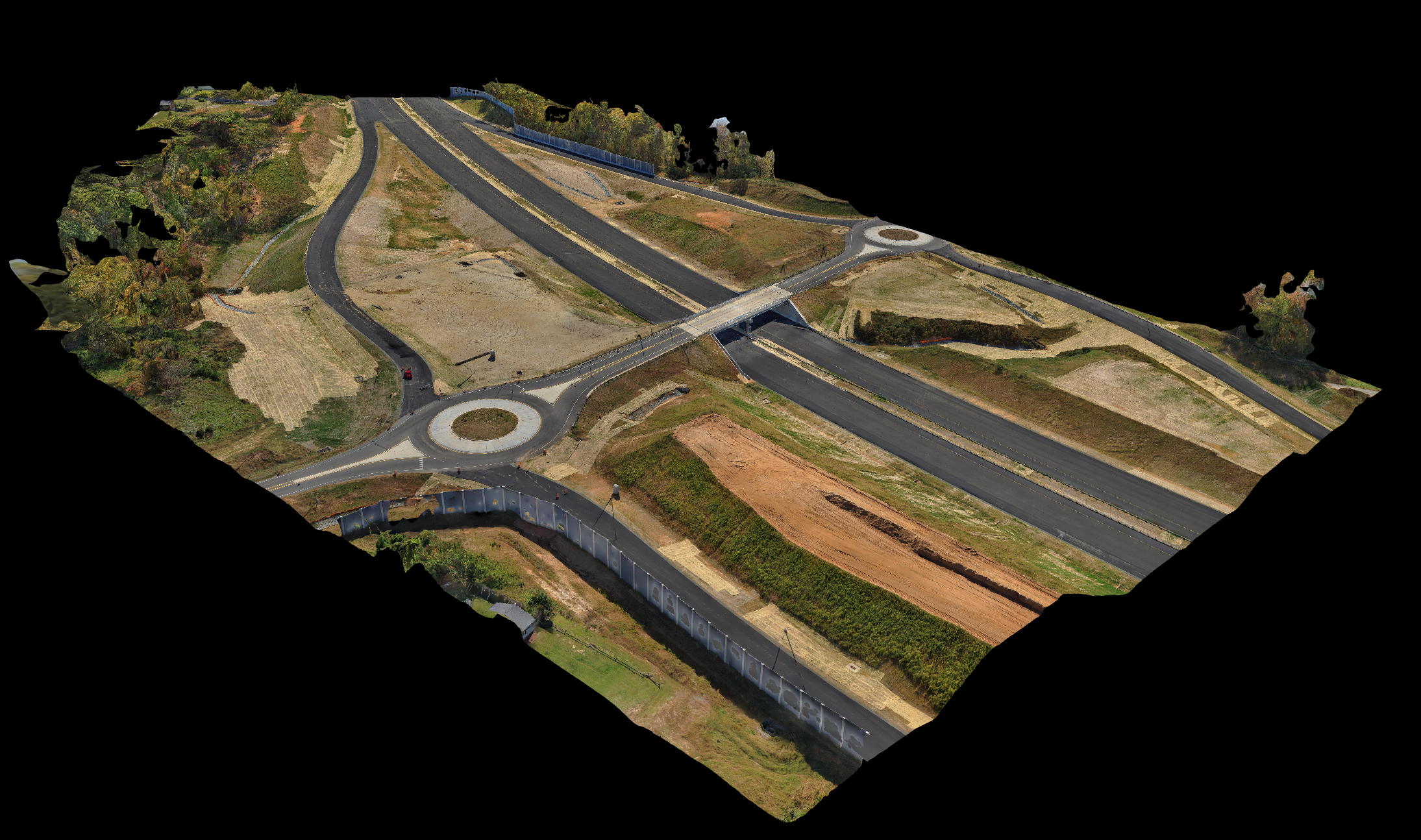
- 3D Scan. The 3D scan allows the drone to create ultra-high resolution models of any structure, using autonomous flight to automatically capture a structure or scene, indoors or outdoors, with minimal pilot training or oversight. Onboard modeling enables X10D operators to rapidly generate detailed 3D models directly on the drone. The process is simple and produces a textured 3D model in minutes.
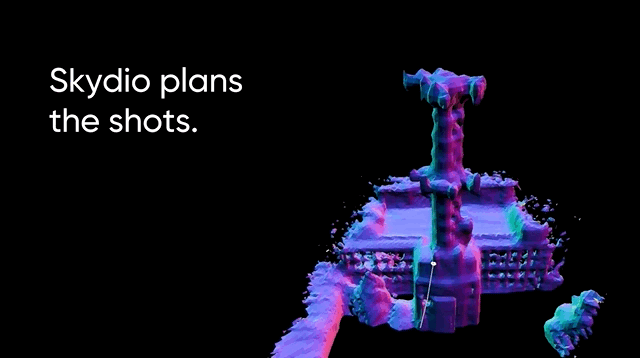
- ATAK integration. Units can stream to the Android Tactical Assault Kit (ATAK) network, either offline or online.
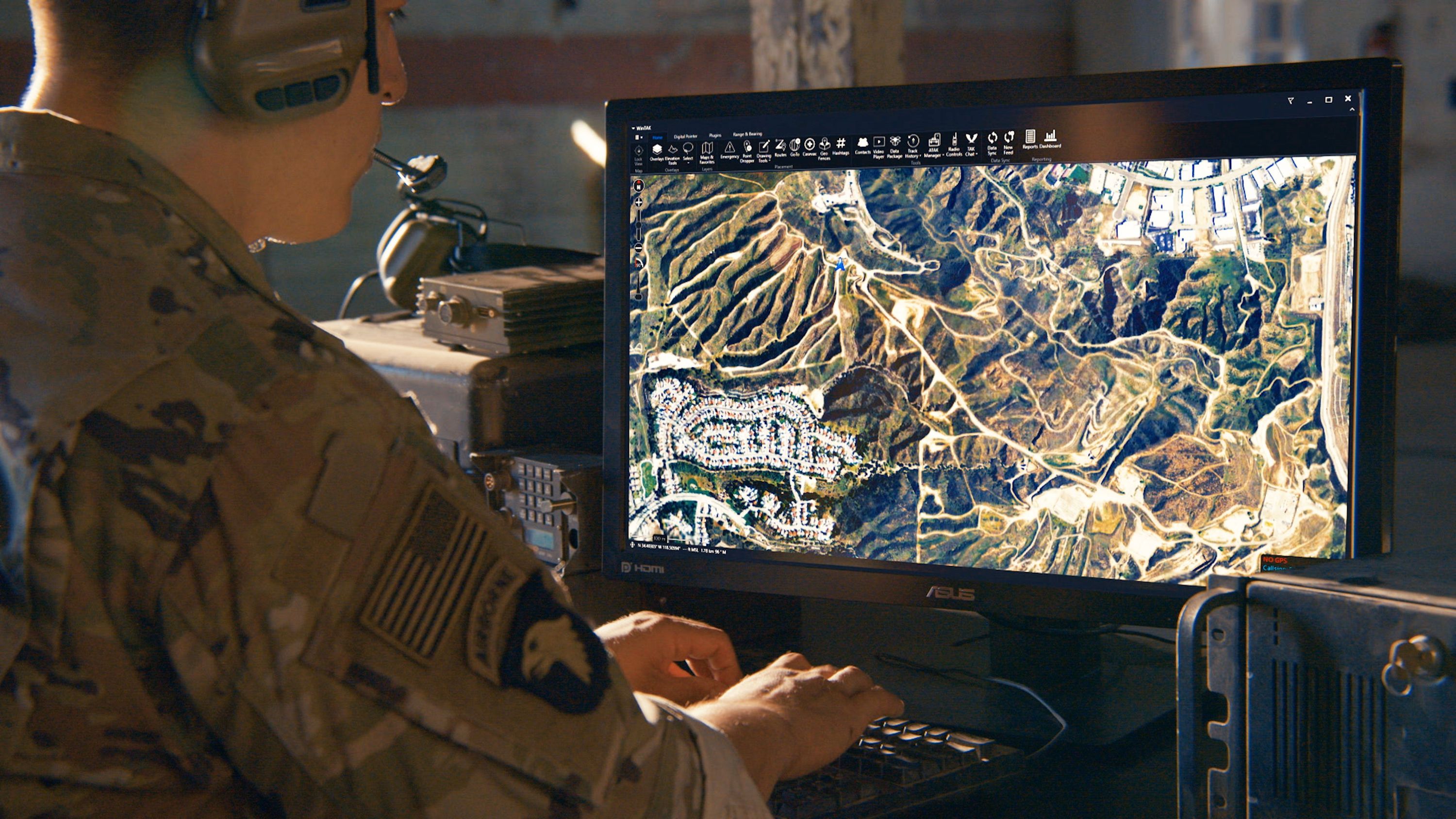
With its foundation of visual navigation autonomy, combined with multiple connectivity and integration options, X10D opens the door for multi-drone scaling in ways that no other drone in its class can manage. It is an ideal platform for the defense establishment to use in developing multi-drone organic ISR for the battlefield of the future. Working with the Defense Innovation Unit’s (DIU) Artificial Intelligence for Small Unit Maneuver (AISUM) project, Skydio has already built the technical foundation for such multi-drone operations.
Visionary cameras that get the job done
Ultimately, a drone is only as good as its sensors. X10D captures the sensor data that defense forces need to locate humans, threats, and objects of interest. It has the most powerful sensor packages available on any sUAV platform of its size, so it can precisely sense priority information on the battlefield, and then make sense of that information at machine speed.
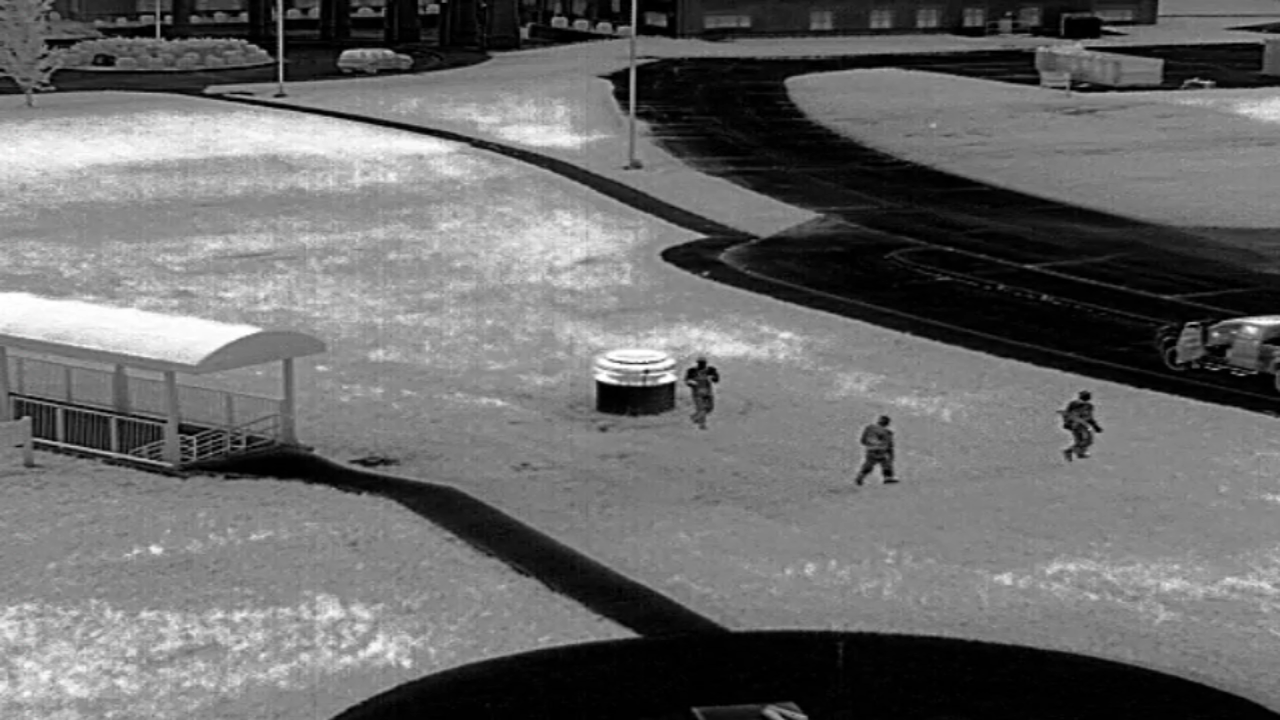
X10D has an incredible thermal camera, the Teledyne FLIR Boson+, with resolutions of 640x512, capable of sensitivity down to <=30mK, and extremely accurate radiometric readings. With this powerful thermal resolution and tuning, X10D can be employed at great standoff distances while gaining precise and actionable intelligence from thermal imaging, thereby increasing tactical options for military operators. It detects temperature differences with great precision to identify hotspots, humans, and other objects or anomalies in the environment, even in complex urban zones and densely vegetated areas.
X10D’s standard 64 MP and 48MP cameras provide wide, narrow, and telephoto fields of vision and bring back information at a level of fidelity that can enable improved decision-making. The maximum video resolution from these cameras is 3840 x 2880 pixels – better than what’s delivered by a commercial 4K television set. All cameras are optimized with a wide aperture (f/1.8 narrow and f/2.2 telephoto) zoom for superior low-light performance. An example mission may initially require long-range, comprehensive situational awareness, which can be delivered from the X10D narrow camera. Lossless digital zoom allows operators to zero in on objects of interest, and then transition to the telephoto lens for crisp, high-resolution image details. These powerful sensors create exceptional situational awareness and give units a much greater variety of tactical options, including employing long-range standoff geometries and unexpected approach angles.
Ready for anything, anytime, anywhere
X10D is built with a rugged, IP55-certified, weatherized design that enables 24/7 operations in harsh conditions and contested terrain. Rucksack portable, it can withstand battlefield environments over a broad temperature range with durable materials that have been optimized for strength, heat dispersion, and weight. It operates reliably in rain and dust and can maintain stable flight even in high winds.

A single individual can deploy X10D in less than a minute. Once launched, operators can fly X10D with or without GPS. In most environments, X10D maintains robust navigation with a global navigation satellite system (GNSS) receiver connecting to four satellite constellations simultaneously. When satellite positioning system communications are degraded or denied, however, X10D can navigate using vision-based navigation. X10D rapidly gains information about its surroundings through computer vision, enabling the drone to navigate and capture the optimal dataset quickly and safely. X10D users can switch from GPS mode to autonomy mode mid-flight as they move near structures or dense terrain. If local RF transmissions are denied or lost, X10D can navigate and return to a pre-planned location using its vision-based navigation. No other small ISR drone has the equivalent capability. And Skydio has more enhancements to these capabilities in development.
X10D also provides operators with connectivity options in different frequency and regulatory environments through multiband radio, so it can operate effectively anywhere in the world. Skydio Connect MH, now in its 3rd generation, allows defense operators to maintain linkage and swiftly offload sensor data to support mission needs.
As defense forces evolve, X10D can also evolve and adapt to new requirements. As mentioned above, X10D provides a modular, open architecture that allows for add-on payloads (both 1st and 3rd party) and supports interoperability via secure common standards. Four hardware ports enable user add-ons using MIPI, USB3, and modular connector ports, with up to 50W of power available for attachments. Operators can even quickly swap attachments and relaunch X10D during missions.
A reliable, trustworthy product – and partner
X10D is specifically designed to stand up under challenging conditions, both physical and electromagnetic. It will avoid obstacles, and crashes, even under challenging conditions. If contact is lost, it will automatically return to the point from which it was launched, or to a pre-programmed recovery point. And like all Skydio products, X10D benefits from industry-leading end-to-end customer support, a core element of Skydio’s long-term commitment to defense partners. In short, X10D can be trusted. But combat reliability is only part of the total reliability picture.
X10D is secure by design, safeguarding each layer of the UAS stack against external threats. The supply chain that supports X10D was developed in close partnership with the Defense Innovation Unit (DIU) and complies with the National Defense Authorization Act (NDAA). Advanced security features for X10D include HSM-based root of trust, hardware crypto engine-based key storage, secure boot, and link-layer AES data link encryption. Software is consistently updated using agile software practices that allow Skydio to keep pace with changing defense force battlefield architectures. No X10D data is stored in the cloud, and data is never available to Skydio without the customer’s approval.
Small drones have become an essential tool in modern combat. As free and independent countries race to improve readiness, warfighters need the best possible drones. Skydio X10D meets these needs with a superior, cost-effective technology that ushers in a new generation of human-machine teaming.
Learn more about this groundbreaking sUAS at Skydio.com/X10D.
